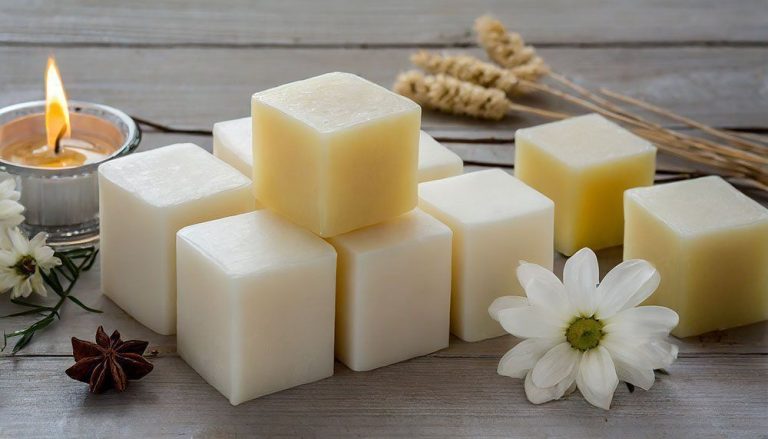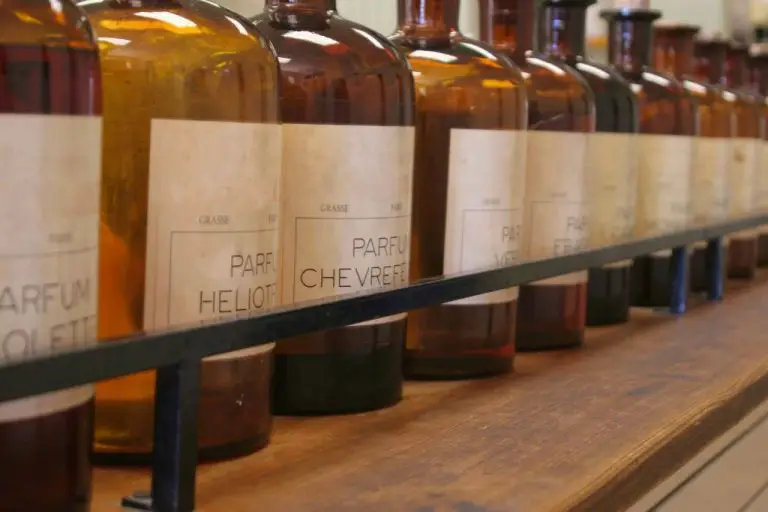Is Paraffin Wax Just Candle Wax?
What is paraffin wax?
Paraffin wax is a soft, colorless solid derived from petroleum, coal, or oil shale that consists of a mixture of hydrocarbon molecules containing between twenty and forty carbon atoms. It is solid at room temperature and begins to melt at approximately 37°C (99°F) (1).
Paraffin wax is extracted during the process of refining crude oil to produce gasoline and other petroleum products. The crude oil is heated and then cooled, allowing the wax to precipitate out. The precipitated wax is then filtered and refined to remove oils and other impurities (2).
Chemically, paraffin wax mainly consists of straight chain alkanes such as eicosane, docosane, tetracosane, and hexacosane. It can also contain branched and cyclic alkanes such as isoparaffins. The exact composition depends on the source of the crude oil (1).
References:
(1) https://en.wikipedia.org/wiki/Paraffin_wax
(2) https://www.healthline.com/health/paraffin-wax
Uses of paraffin wax
Paraffin wax has many uses beyond just candles. Some of the most common uses are:
Candles
One of the most well-known uses of paraffin wax is for making candles. The wax is ideal for candles because it burns cleanly and consistently, and is inexpensive. Paraffin wax candles come in many forms including container candles, votives, pillars, tealights, and tapers.[1]
Cosmetics
Paraffin wax is used to make a variety of cosmetics including lipsticks, eye liners, foundations, hand creams and lotions. It provides smooth consistency and glide to color cosmetics. The wax is also useful for making depilatory waxes for hair removal.[2]
Food processing
The FDA has approved paraffin wax for some uses in food processing and preparation. It can coat candy to make it shiny, help chewing gum retain flavor, and coat fruits and vegetables to retain moisture. Paraffin wax is also sometimes used in canning.[1]
Medicine
Medically, paraffin wax is used in salves to treat dry skin and inflammation. It is also used for making dental impressions and临 modeling prosthetics. Some health providers offer paraffin wax baths to relieve joint pain and stiffness.[2]
Paraffin wax in candles
The most common use of paraffin wax is in candle making. Paraffin wax has excellent burning properties that make it ideal for candles. It has a high melting point between 50-80°C which allows the wax to form a nice pool of liquid wax while the candle burns. The wax then evaporates during burning and allows the candle wick to continue burning and drawing up more liquid wax. Paraffin has a low viscosity when melted which allows the wax to be easily wicked up through the wick. It also has virtually no scent which results in no impact on fragrance oils used in scented candles. The high melting point coupled with low viscosity and lack of scent makes paraffin an excellent choice for candle wax according to Carmel Industries (source).
Other types of wax for candles
While paraffin wax is commonly used for candles, there are some other wax options that offer unique properties and benefits:
Beeswax
Beeswax is a natural wax made by honey bees. It has a sweet, honey-like scent and produces a brighter flame than paraffin wax. Beeswax candles are more expensive but are appreciated by some for their natural origin and ambient lighting. Beeswax is harder than paraffin so it can be difficult to work with (Source).
Soy wax
Soy wax is made from hydrogenated soybean oil. It is a renewable and biodegradable resource. Soy wax burns slower and cooler than paraffin wax and is commonly used for container candles. It can be prone to frosting but creates a smooth appearance (Source).
Gel wax
Gel wax refers to a blend of paraffin wax and mineral oil or polymer additives. It has a thick, jelly-like consistency and is commonly used in embeds or accents on candles. Gel wax allows for fine detailing and vibrant colors (Source).
Safety concerns
When burned, paraffin wax candles release toxic fumes into the air, including toluene and benzene. According to research from South Carolina State University reported by CNN, paraffin wax candles are a major source of indoor air pollution, emitting harmful chemicals like toluene and benzene when melted or burned (source).
The fumes released can cause serious health issues like respiratory irritation, dizziness, and nausea. Asthma sufferers may also experience aggravated symptoms from breathing in the fumes. Pregnant women and young children are especially vulnerable. Long-term exposure to the toxins can potentially lead to more serious conditions like cancer (source).
In addition to toxic fumes when burned, paraffin wax also creates pollution. As a petroleum byproduct, its production utilizes fossil fuels and releases carbon emissions. Its non-biodegradable nature also leads to accumulation in ecosystems when waste paraffin makes its way into landfills and oceans (source).
Environmental impact
Paraffin wax is derived from petroleum, so it is not renewable or sustainable (source). Petroleum is a finite resource, and extracting and refining it carries environmental costs. Paraffin wax production generates pollutants like sulfur dioxide that contribute to acid rain. Burning paraffin also releases additional toxins into the atmosphere.
There are more eco-friendly waxes available, like soy wax and beeswax (source). These renewable and biodegradable alternatives have a smaller carbon footprint. Using them reduces dependency on fossil fuels and lessens environmental damage. Many candlemakers are switching to soy, beeswax, or other sustainable waxes.
Making paraffin candles
Making candles out of paraffin wax is a straightforward process. First, you will need to melt the paraffin wax. Paraffin wax melts at temperatures between 115-150°F, so you can use a double boiler or slow cooker to melt it down. Make sure you melt the wax slowly to avoid overheating it. Once the wax is fully melted, you can add fragrance and dye as desired. Candle fragrances are mixed at a rate of 1 oz of fragrance per 1 lb of wax. Stir thoroughly to fully incorporate. As for dyes, liquid candle dyes or color blocks work best with paraffin. Add just a small amount at a time, starting with a toothpick dip, until you reach the desired color intensity. The next step is preparing the wick. Use braided or cored wicks that are made specifically for container candles. Cut the wick to about 1/2 an inch longer than the height of the container so it doesn’t get drowned in wax. Secure the wick to the bottom of the container with a drop of glue or wax before carefully pouring in the melted wax. Top off the container right to the rim and let cool completely before trimming the wick and using.
For more details, refer to this step-by-step tutorial: https://www.candlescience.com/learning/simple-paraffin-containers/
Storing paraffin candles
Properly storing paraffin candles is important for maintaining their quality and extending their shelf life. Paraffin wax is sensitive to heat, so candles should be stored away from heat sources like ovens, direct sunlight, or radiators. According to BHG, “Ceramic or cement candle jar holders should be stored in a plastic bag to contain the fragrance but, more importantly, to avoid damage to the wax from temperature fluctuations” (source).
Before storing, trim wicks to 1⁄4 inch to prevent sooting and encourage an even burn when the candle is lit again. Wicks should be trimmed every few hours of burn time. Supplies for Candles recommends leaving at least 1⁄4 inch of unmelted wax around the wick when a candle is nearly finished before storage (source).
Storing trimmed, fully cooled paraffin candles in a cool, dark place will help them last longer before their next use.
Troubleshooting
Candle making can sometimes result in issues like sooting, tunneling, and cracking. Here are some common troubleshooting tips:
Sooting
Sooting occurs when a candle flame becomes too large and produces black smoke. This can dirty the jar and ceiling. Sooting is generally caused by the wick being too large for the wax pool. To prevent sooting, trim the wick to 1⁄4” before lighting and make sure the wax fully melts on each burn. If sooting occurs, blow out the candle and trim the wick shorter [1].
Tunneling
Tunneling happens when the wax on the sides and top edge of the candle melts faster than the wax in the middle. This leaves a hole or tunnel in the center. To fix tunneling, allow the wax to fully melt and reach the edges of the container on each burn. You can also use a heat gun to gently re-melt and level the wax [2].
Cracking
Cracks can form on the top of the candle as the wax cools and contracts. To prevent cracking, avoid drastic temperature changes and let candles cool slowly. Cracks can be repaired by gently warming the surface with a heat gun and smoothing over the cracks with a knife.
Conclusion
Throughout this article, we’ve examined several key aspects of paraffin wax to gain a deeper understanding of what it is and how it’s commonly used. We learned that paraffin wax is a byproduct of petroleum refining and is composed of saturated hydrocarbons. It has a wide range of applications, like manufacturing candles, sealing food, and creating cosmetic products. However, paraffin also has some downsides – it’s not a renewable resource, can release toxins when burned, and is less environmentally-friendly than natural waxes.
While paraffin remains popular for candlemaking due to its low cost and easy moldability, alternatives like soy wax, beeswax, and coconut wax are available. These offer benefits like being renewable, cleaner burning, and supporting small farmers. Ultimately, the choice comes down to your priorities and preferences.
In conclusion, paraffin wax is not simply candle wax. It has a complex manufacturing process and long history of uses ranging from medicine to explosives. Evaluating its pros and cons compared to more natural waxes can help consumers make informed decisions aligned with their values.




